*How much should my cat be eating or drinking in the first days?
Some cats will begin eating immediately after transport, but many might eat very little or even nothing at all for a day or two. Don’t worry, but make sure that they have access to food close to them (if they are hiding, bring it to them). You can also try treats or Churus to get them started, or sprinkle some Fortiflora on their food to make it extra tasty.

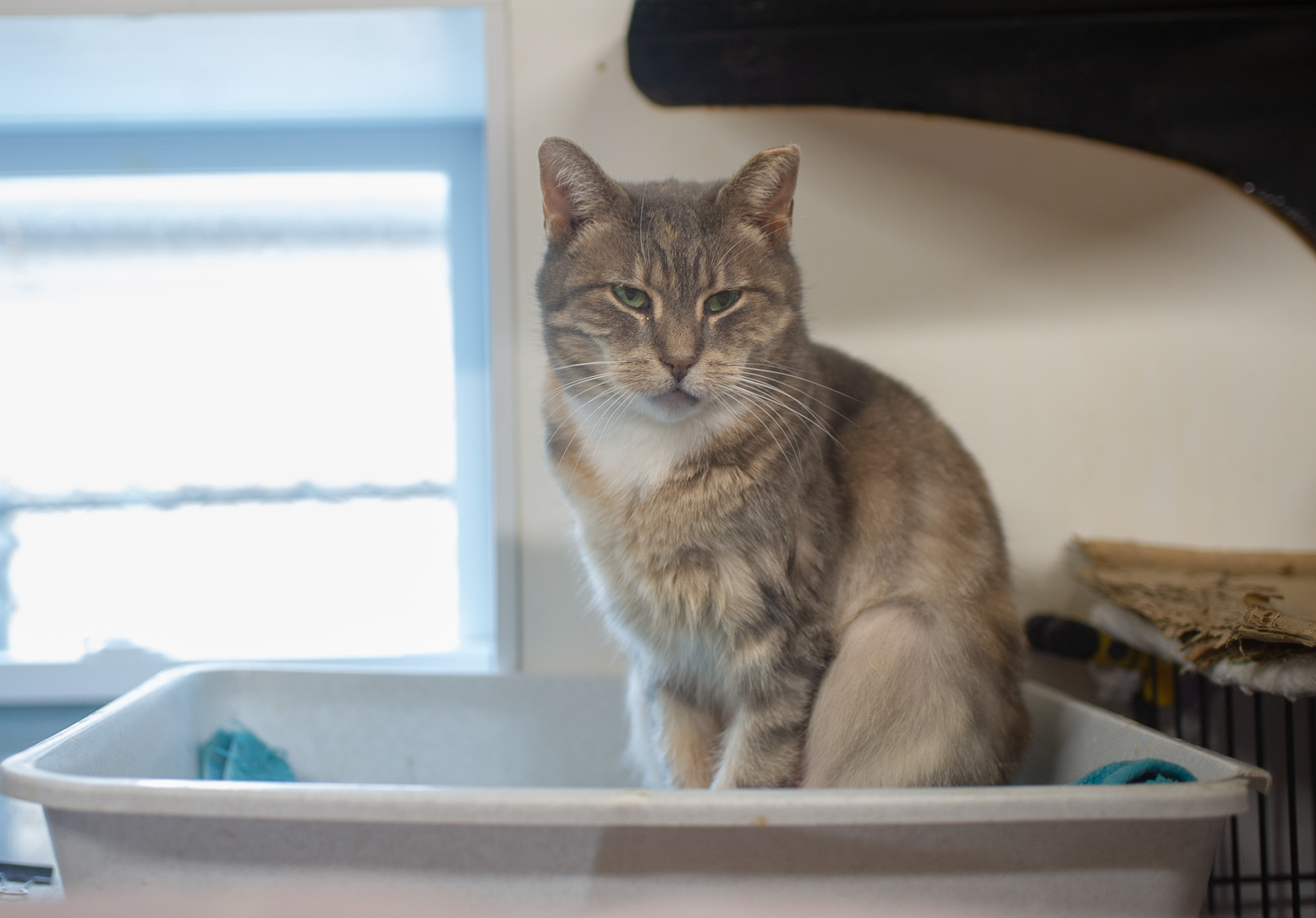
*How quickly should they begin using the litterbox?
Cats might take a night or so to use the box. Do not worry if they do not defecate in the first couple of days. They should urinate by the second day. If you notice the cat straining in the box but not producing any waste, please contact us immediately. Otherwise, don’t stress.
*If the cat is hiding, be sure that the litterbox is in their hiding area. They might be too afraid to leave their spot to use it.
*Be sure that the litterbox is open and not covered. Cats coming from a shelter environment may not know what to do with a covered box. You can add the cover once they are settled in. We do not recommend top-entry covered boxes as it makes the cats feel claustrophobic and they are less inclined to use it.
*If the cat is not using the box properly, please check in with us so we can help. You might try sprinkling some cat attract litter on top of their box to help things along.
What are some things that I can do to help the cat feel more at home?
Note that even the most seemingly well-adjusted cats feel a great deal of stress after transport, even if they are coming from a shelter environment. They will need time and consistency.
Here are some things to try:
- Feliway diffuser
- anti anxiety cat playlist
- bed with a hiding spot(these beds provide a safe hiding place that is also accessible so we can reach them. Much better than a closet or under the bed).
*If the cat is hiding, be sure that the litterbox is in their hiding area. They might be too afraid to leave their spot to use it.
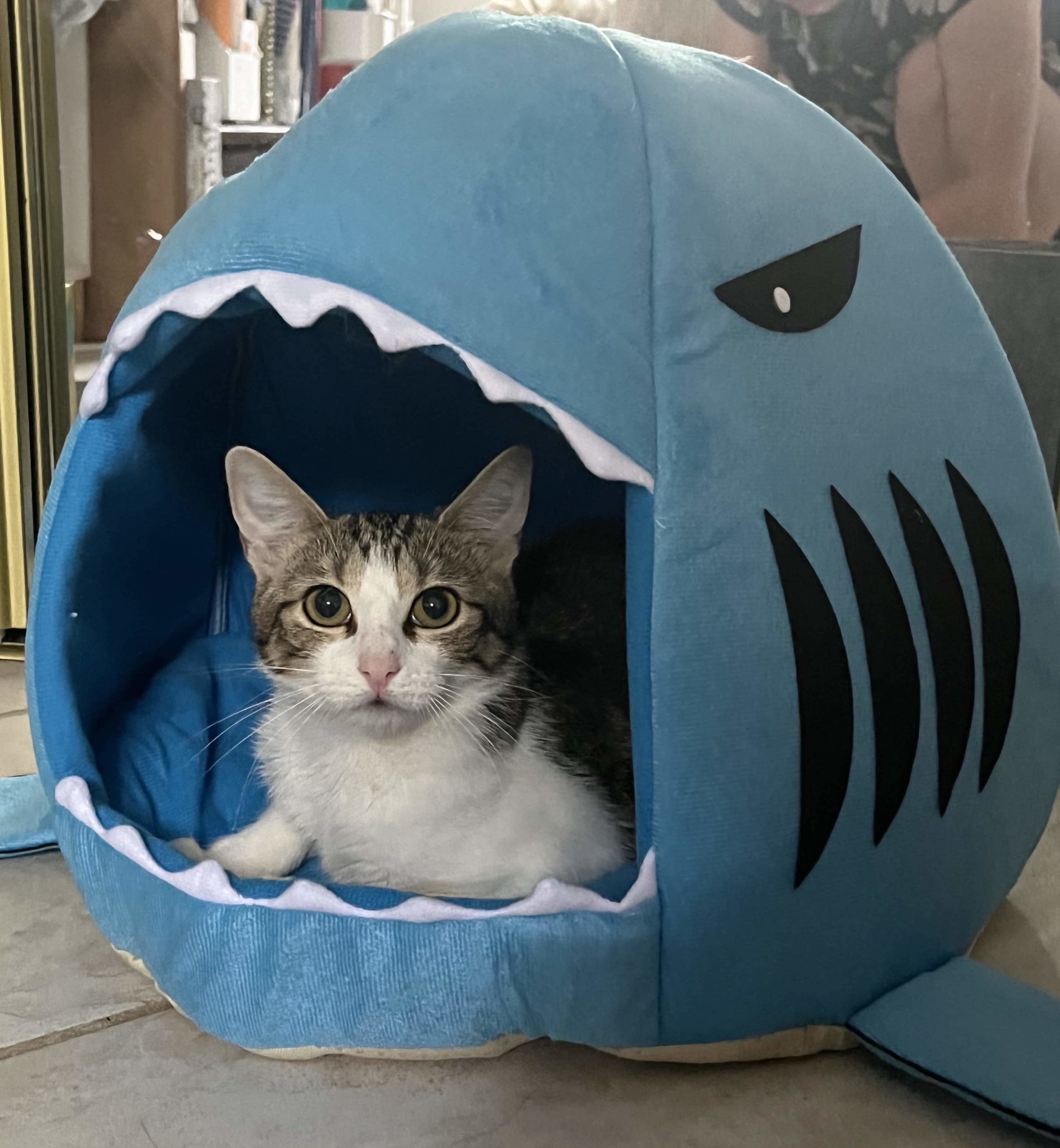
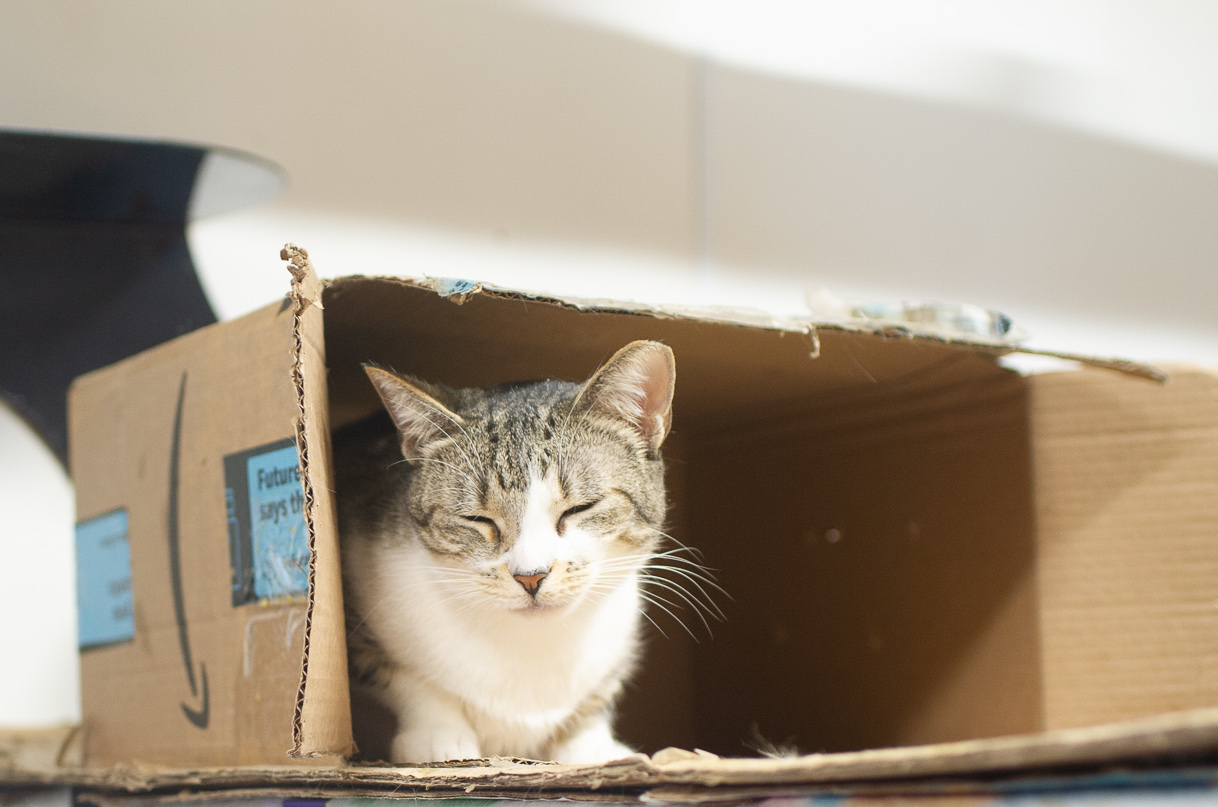
My cat is still hiding: Help!
First, don’t worry. They will take some time to adjust to the new space. Use play and regular mealtimes to set a routine. Try to get in a petting session a couple of times a day (it is important to have contact with them so that they don’t regress further). You will find a balance between giving them space and giving them some attention. Try using treats or Churus to gently coax them out.
How long will it take my cat to adjust?
This depends on the cat and the type of household they are adjusting to. It is normal for cats to hide for the first few days. But we are here to support you during the adjustment process. A volunteer familiar or the cat’s most recent foster parent can give you a better idea of what to expect based on that specific companion animal’s history and personality.
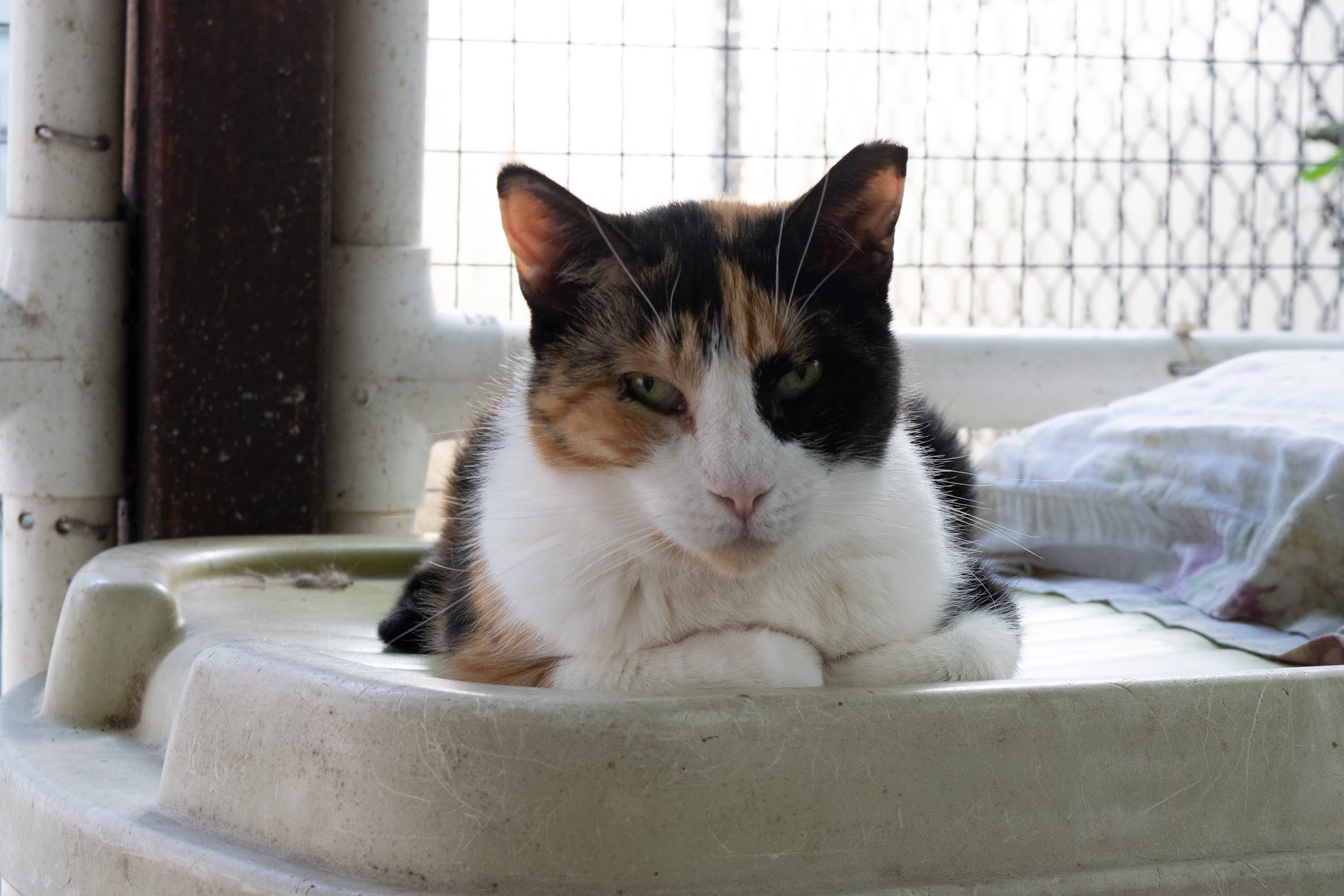
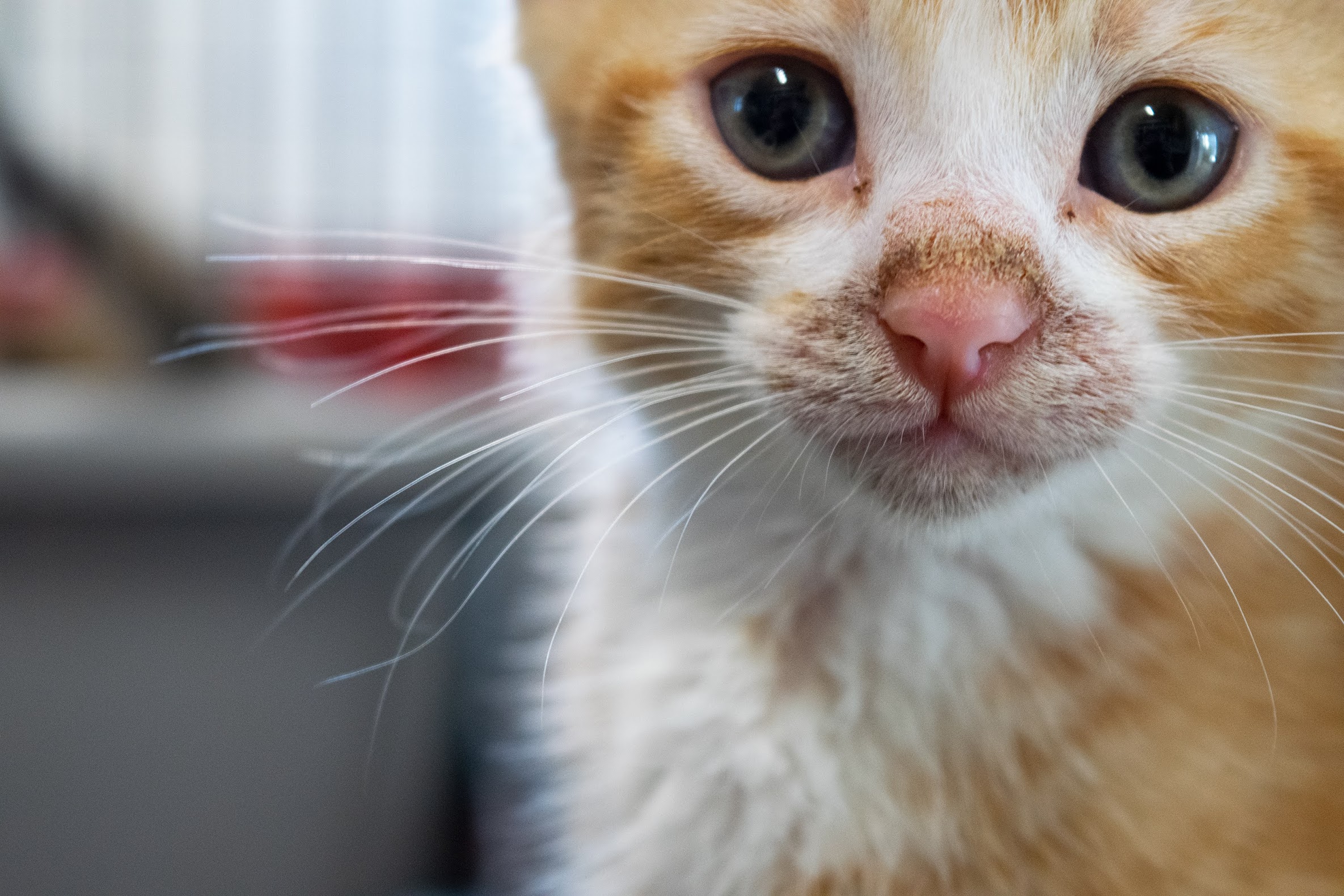
Other common first days FAQS
Should I put a collar on my cat?
Collars can be dangerous for cats because they can get stuck on other objects and severely scare, harm, or even kill them. If you want to put a collar on your cat, we recommend purchasing a breakaway collar so that they will be safe from an accident.
Why is my cat crying all night?
It is perfectly normal for a cat to vocalize during the night for the first week or so. It will subside once they acclimate to their new environment. You can help by letting them stay with you during the night, though it may seem counterintuitive.
Why is my cat sleeping all day and up all night?
You can help get the cat on your schedule by creating a routine. Play with the cat in the evening (try the cat dancer) and feed meals rather than free feeding to help this along. Cats do not need to snack all day long. You might consider giving them breakfast, dinner, and a bedtime snack to help them to sleep through the night.
Check out this informative video about creating routines through food:
Why is my cat swatting at me?
This may mean that the cat is overstimulated. See if you can watch their cues. Cats have different thresholds for petting and attention. If you watch them with care, you will notice before they reach the swatting stage. Watch their ears, the hair on their back, and their eyes. Keep petting sessions short at first and then gradually increase the time. Soon, you will know their limit and they will likely become more and more comfortable with petting sessions over time. Let them set the pace.
When should I go to the vet?
You will receive medical records at the time of adoption. Your cat does not need to go to the vet until a year later, when they are due for their next checkup/booster. If you would like to go sooner, we recommend waiting a couple of months to allow them some time to settle in. Both transport to a new home and a trip to the vet are extremely stressful to cats, so try to space them out as much as possible.
If your cat does not seem to be feeling well, please feel free to reach out to the team of volunteers and we will do our best to support you.
Please review our FIP guide, especially if your new cat is under two years old. The stress of rehoming and treatment at the vet, while rare and unlikely, can sometimes be a trigger for the development of FIP, an illness that must be caught early to treat.
